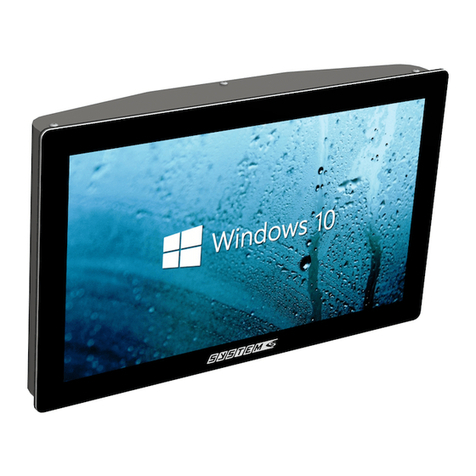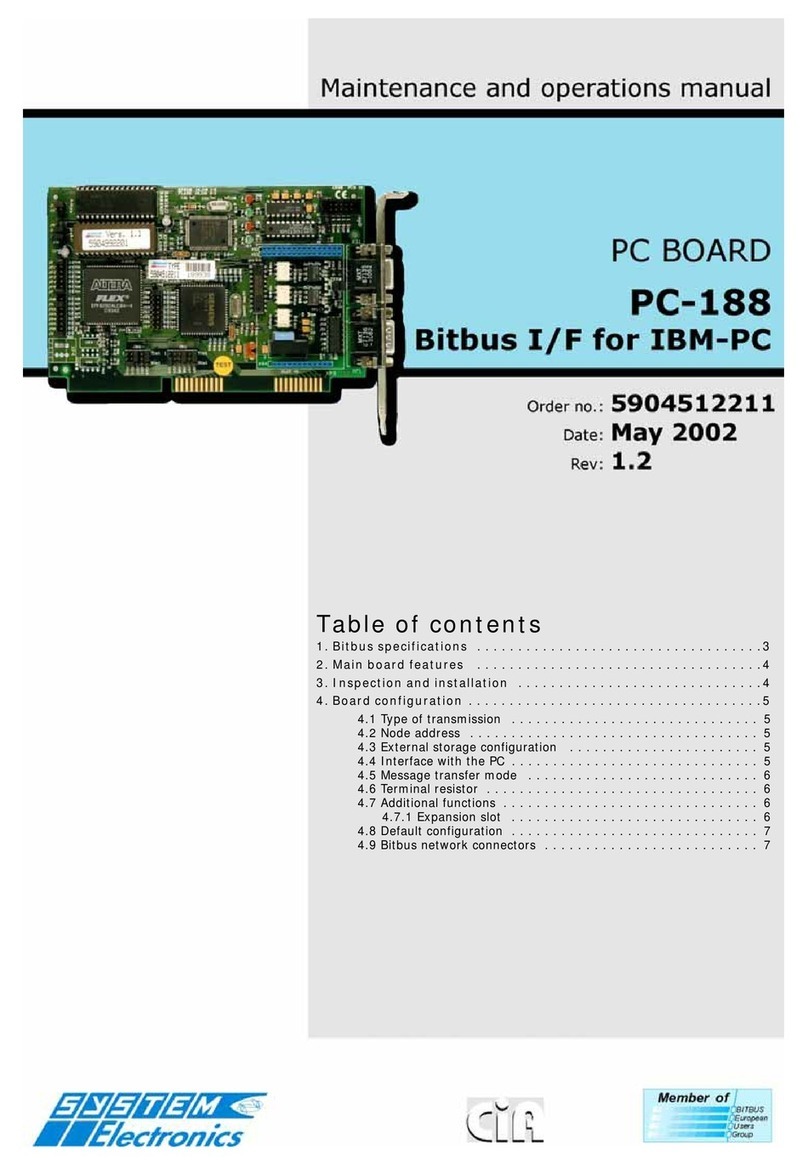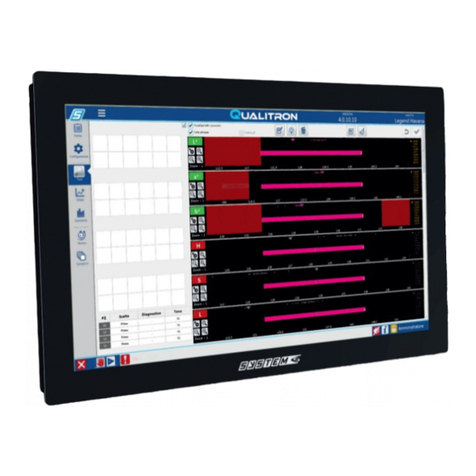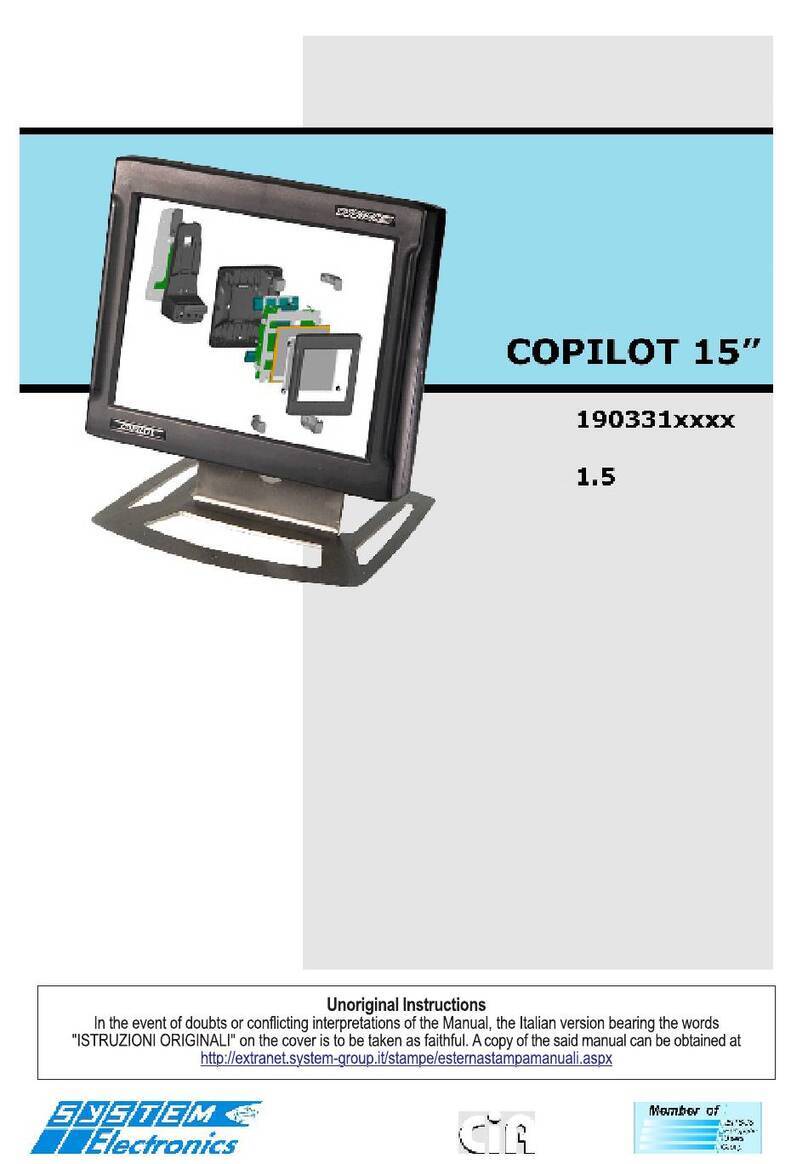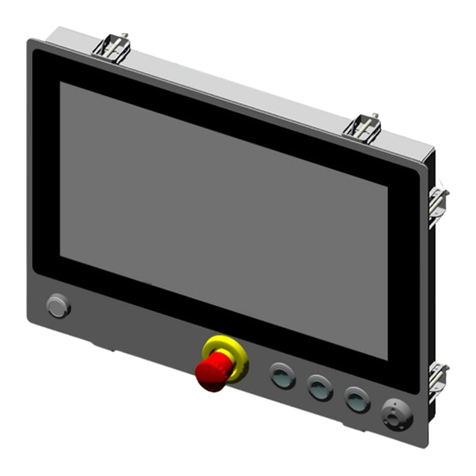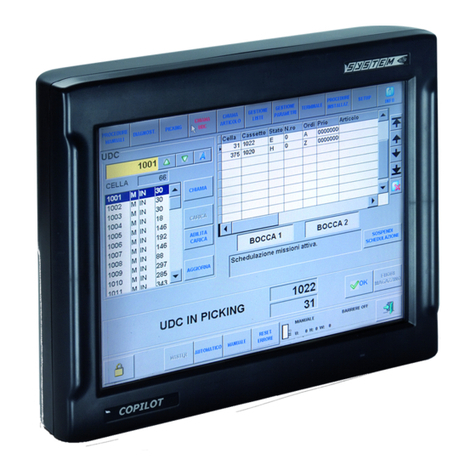PAGE
4
INDUSTRIAL PC - COPILOT
ORDER NO. 5906510010DECEMBER 2005 - REV. 1.3
3.5 Touch-Screen and display
The touch-screen permits the User to interact with the
application program by emulating the left-click of a
mouse. The driver for Windows 98/2000/XP also
emulated the right-click, if required by the program, by
pressing the touch-screen for a few seconds. A "virtual
keyboard", running in the Windows environment, is
provided to enable the user to insert data that would
ordinarily have to be typed.
The display brightness can be regulated in order to save
energy and prolong battery life. The display is set to
maximum brightness by pressing the touch-screen, then,
after a few minutes, it reverts to minimum brightness.
Using the management program provided, the User can
alter the display brightness settings: maintaining it at a
fixed brightness, or activating a screensaver.
The display uses a CCFT lamp, with a typical luminosity
of 150 nit and a lifetime of 20.000 hours.
The display resolution is 800×600 pixels, with a reading
angle of ±45° horizonal and ±15° vertical.
3.6 Batteries
COPILOT is supplied with two 7.2V 4100mAh NiMH
battery pack (a single battery for the VIA 667MHz
version).
The power supply includes an advanced battery charger
circuit that optimises battery duration and reduces
deterioration caused by frequent recharging.
The system estimates the remaining battery charge and
communicates it to the CPU via the parallel port or the
COM1 serial port.
The software provided with COPILOT indicates the
remaining charge and shuts down the system before
the CPU is switched off.
The charge level is expressed as a number between 5
(min) and 250 (max).
The batteries are recharged only when they have fallen
below 50%.
The batteries are at the minimum level when the voltage
reaches 1V/cell.
Completely discharged batteries are normally recharged
in 4 hours.
The management program indicates if it is necessary to
"trickle charge" the batteries in order to recondition
them. "Trickle charge", which takes 12 hours, requires
a specific command from the User. COPILOT must be
completely discharged before a trickle charge is
executed.
The current drain depends on the type of charge, and
varies from 0.5A to 1A at 24V.
In the case of 12V versions, a single battery pack is
fitted in the lower compartment: the maximum duration
is reduced to two hours, although recharge times remain
the same.
3.7 Connectivity
COPILOT wireless applications offer a maximum of
flexibility and freedom, enabling the User to control the
machine from a range of locations.
COPILOT has been designed as a universal interface, it
permits the User to communicate with the machine,
receive the required data, as well as the desired manuals,
and update the equipment without difficulty.
Native interfaces:
•USB, connector located on the rear
•IrDA, short-range Infra Red communications with
devices such as telephones, printers and modems
Optional interfaces:
•WI-FI: 2.4GHz wireless radio communications in
conformity with the 802.11b standard, using point-
point or access-point modes. For greater security,
information can be encoded using 64 or 128-bit
WEP. The maximum communication distance
between two units, or between COPILOT and the
access-point is 100m
•Bluetooth interface for short-range
communications with compatible devices
•GPRS: radio modem for permanent connection to
Internet and Email services
•The free PC104 slot can be used to connect special
applications (GPS, tele-camera, GPRS, modem, …).
An ETHERNET connection can be used, as an
alternative to the USB connector on the rear.
3.8 Communication with the
Docking Station on board
the machine
When the unit is recharging, communication between
COPILOT and the machine is possible, depending on the
type of base is use, and the IrDA optical port settings.
When supplied, the Docking Stations are set-up for a
specific communication type, via the IrDA port, and may
use:
•CANbus
•RS232
•RS422
•ID
CANbus mode, where COPILOT can dialog with the
machine units via the CAN UART, enabling the User to
control the command devices directly, and monitor the
machine operating state. CPU CAN communication is
sent through the parallel port and transferred to the
base via the integrated optical port, where it is
reconverted to the CAN ISO 11898-24V standard.
To enable software application transparent
communication with the hardwired devices, the CPU
RS232 can be transferred to the base via the optical
port, and duplicated at a standard DB9 connector on
the rear of the base.
Alternatively, each Docking Station can be assigned a
unique ID number so that they can be identified in a
system consisting of more than one machine, thus
ensuring secure operation.
The Docking Station can also be supplied without any
options, so that it can be used simply as a battery charter.
